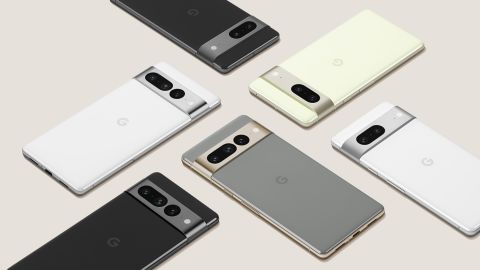CNN Business
—
When Google unveiled its new Pixel 7 smartphone lineup earlier this month, the devices looked largely the same as the year prior. But there was at least one subtle change: the colors.
Whereas the Pixel 6 had come in sorta seafoam (a light blue) and kinda coral (a pale pink), the Pixel 7 now comes in lemongrass (a green) and snow (off-white). Google has also swapped the stormy black (a stormy black) option on the Pixel 6 for obsidian (still black) on the Pixel 7.
The emphasis on a new color palette for devices isn’t unique to Google. As tech companies showed off their latest smartphones, tablets and laptops at splashy press events over the last two months, many of the products had only limited changes on the outside but boasted elaborately named color options.
Microsoft launched its Surface Pro 9 tablet in shades such as sapphire (blue) and forest (green), and its Surface Laptop 5 comes in metal (silver), sage (green) and sandstone (tan). Apple’s new iPhone 14 lineup comes in Starlight (a champagne color) and midnight (black), and the company has previously unveiled two shades of green (“green” and “alpine green”) and purple (“purple” and “deep purple”).
Purple, in particular, has been having a moment in tech. Earlier this summer, Samsung unveiled a “bora purple” color for its flagship Galaxy S22 smartphone — the word “bora” in Korean translates to “purple,” effectively dubbing the color “purple purple.”
At a time when many of the biggest upgrades to smartphones and other gadgets are under the hood, drumming up consumer interest with a fresh coat of paint may be easier in some ways than getting people excited about faster processors.
“The quality of all phones is so high, it’s getting difficult for consumers to even notice what ‘better’ is anymore,” said Kelly Goldsmith, professor of marketing at Vanderbilt University. “As a result, tech brands need to adopt new strategies. Introducing different, niche colors is just one way to do it.”
For consumers, there can be a real value to a broader range of colors. “Devices — whether they’re smartphones, wearables, PCs, or tablets — are an extension of the user’s persona, both in terms of who they are and who they aspire to be,” said Ramon Llamas, an analyst at IDC Research. “Introducing a different color is a way for devices and their owners to distinguish themselves.”
But just as basic black, white, gray and silver are the top colors in the automobile industry, these colors tend to resonate most with smartphone owners, according to Peggy Van Allen, a color anthropologist for the Color Marketing Group. Still, she noted, a shift has been underway toward stronger colors.

Apple famously brought “Bondi Blue” to its Mac line in the late 1990s after Steve Jobs’ return to the company (it was a huge success). More recently, it created a splash with the introduction of the rose gold iPhone in 2015.
“Warm metallics went away and then came back in style, and rose gold really reached mass appeal,” Van Allen said. “It peaked at a time when social media influencers were gobbling it up, and the popularity of Millennial Pink also helped to usher it in.”
Both pinks lasted longer than most forecasters would have predicted, she said. “It was carried along by other trends of the time that enforced the desire for personalization and female empowerment.”
The names of more recent colors have become increasingly esoteric in the last year or so. This is also likely a strategic play, according to Barbara Kahn, a professor of marketing at the University of Pennsylvania’s Wharton School.
“Color names that are descriptive but odd can spark positive reactions because the consumer likes being able to ‘solve the puzzle,’” she said. “Color names that are ambiguous also spark attention and customers work to figure out what the meaning might be.”
But for all the varied colors out there, it’s important to remember customers still overwhelmingly keep their phones in a case, essentially covering up the color that once helped entice them to upgrade.
“There are some transparent cases available from both first and third parties,” said Eric Abbruzzese, research director at market research firm ABI Research, “but at least anecdotally, they don’t seem as popular as regular cases.”
Source : CNN












